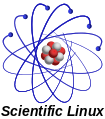

|
RAW(8) RAW(8)
NAME
raw - bind a Linux raw character device
SYNOPSIS
raw /dev/raw/raw<N> <major> <minor>
raw /dev/raw/raw<N> /dev/<blockdev>
raw -q /dev/raw/raw<N>
raw -qa
DESCRIPTION
raw is used to bind a Linux raw character device to a block device.
Any block device may be used: at the time of binding, the device driver
does not even have to be accessible (it may be loaded on demand as a
kernel module later).
raw is used in two modes: it either sets raw device bindings, or it
queries existing bindings. When setting a raw device, /dev/raw/raw<N>
is the device name of an existing raw device node in the filesystem.
The block device to which it is to be bound can be specified either in
terms of its major and minor device numbers, or as a path name
/dev/<blockdev> to an existing block device file.
The bindings already in existence can be queried with the -q option,
with is used either with a raw device filename to query that one
device, or with the -a option to query all bound raw devices.
Unbinding can be done by specifying major and minor 0.
Once bound to a block device, a raw device can be opened, read and
written, just like the block device it is bound to. However, the raw
device does not behave exactly like the block device. In particular,
access to the raw device bypasses the kernel's block buffer cache
entirely: all I/O is done directly to and from the address space of the
process performing the I/O. If the underlying block device driver can
support DMA, then no data copying at all is required to complete the
I/O.
Because raw I/O involves direct hardware access to a process's memory,
a few extra restrictions must be observed. All I/Os must be correctly
aligned in memory and on disk: they must start at a sector offset on
disk, they must be an exact number of sectors long, and the data buffer
in virtual memory must also be aligned to a multiple of the sector
size. The sector size is 512 bytes for most devices.
OPTIONS
-q Set query mode. raw will query an existing binding instead of
setting a new one.
-a With -q , specifies that all bound raw devices should be
queried.
-h provides a usage summary.
BUGS
The Linux dd (1) command should be used without bs= option or the
blocksize needs to be a multiple of the sector size of the device (512
bytes usually) otherwise it will fail with "Invalid Argument" messages
(EINVAL).
Raw I/O devices do not maintain cache coherency with the Linux block
device buffer cache. If you use raw I/O to overwrite data already in
the buffer cache, the buffer cache will no longer correspond to the
contents of the actual storage device underneath. This is deliberate,
but is regarded either a bug or a feature depending on who you ask!
AUTHOR
Stephen Tweedie (sct@redhat.com)
AVAILABILITY
The raw command is part of the util-linux-ng package and is available
from ftp://ftp.kernel.org/pub/linux/utils/util-linux-ng/.
Version 0.1 Aug 1999 RAW(8)
[top]
|
Vote for polarhome |